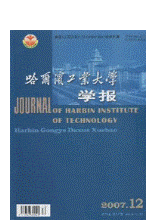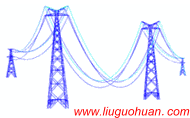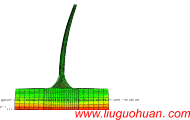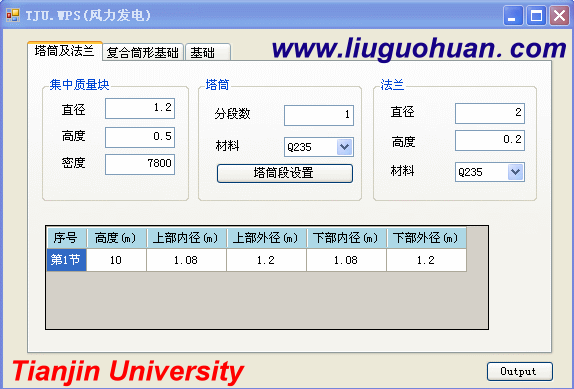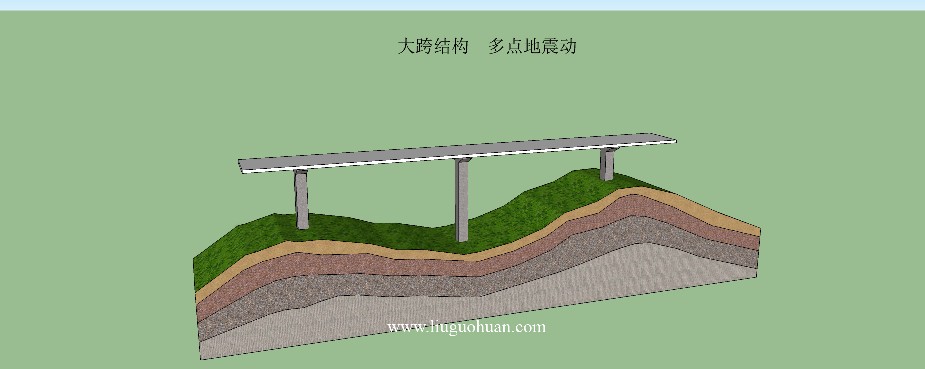An effective and practical method for solving an unnegligible problem inherent in the current calculation model for multi-support seismic analysis of structures作者: Liu-Guohuan, GUO Wei, LI HongNan |
||||||
下载次数:
次 更多论文下载...
PDF格式(左键浏览,右键另存):
doi: 10.1007/s11431-010-4027-z
Abstract:In the seismic analysis of extended structures subject to spatially varying motions, the displacement input model instead of acceleration model is usually adopted for accurate results. In this paper, a more detailed and comprehensive analysis of the displacement input model is carried out and the research shows that there exists an unnegligible problem in the current displacement model, which leads to the irrationality and unconvergence of some calculated results such as base shear etc. Based on the situation, an effective method named massless rigid element (MRE) method is presented to solve the problem. Moreover, the rationality and accuracy of the method are further assessed and the method is applied to a transmission tower-line system project using the commercially available structural analysis software SAP2000. The theoretical and numerical analyses indicate that the MRE approach is not only feasible with sufficient computational accuracy but also practical and can be easily implemented using the commercially available finite element software such as SAP2000. Keywords:extended structures, seismic responses, spatially varying motions, displacement input model, massless rigid element (MRE),transmission tower-line system Introduction As it is well known, most structural seismic analyses are usually based on the relative-response formulation named uniform acceleration input model, which is based on the uniform base acceleration time history input. The uniform acceleration input model is extensively adopted in the structural seismic analysis by researchers and the structural responses (i.e. displacement, velocity and acceleration) relative to ground can be directly obtained. However, according to the actual conditions, the earthquake ground motion is usually characterized by variations in time and space (i.e.the wave passage effect, site coherence effect and local site effect) and the differences in the support motions have significant influence on the structural internal forces [1, 2],especially in the extended structure such as long-span bridge, transmission tower-line system and undergroundtunnel. Thus, in the case of multi-support seismic excitations, structural responses are usually calculated by adopting the absolute-response formulation named displacement input model. The displacement input model is not only suitable to the case of uniform ground motion input but also multi-support input, so it is generally regarded as a universal model for the seismic response analysis. Based on the displacement input model, time history responses of the structure were systematically studied by Yamamura, Hao,Su and Kahan [3–8] and the response spectrum method for the seismic analysis was further studied and developed by Armen Der, Berrah, Li and Ye [2, 9–14]. In this paper, a detailed and comprehensive analysis of the displacement input model is conducted and it is explicitly pointed out that there exists an unnegligible problem in the current model, which will lead to the irrational and unconvergent calculation result (i.e. base shear). Furthermore,it would lead to incorrect structural design despite the reasonable fine-mesh finite element model. In order to solve the problem, the paper presents an effective and practical method, the massless rigid element (MRE), which is established and explained from the perspective of physics. Finally, a simple numerical example is given to verify the feasibility and accuracy of the method, and a transmission tower-line system is also analyzed by using the commercially available computer software SAP2000 to further verify the practicability of this method. Considering that the commercially available finite element programs usually have integrated the current displacement input model, the significant advantage of the MRE method is that it can be directly adopted and implemented in available finite element program without modifying the software routine. Conclusions The calculation model that is widely adopted for evaluating structural seismic responses, especially for the extended structures, has been reviewed and reanalyzed in detail in this paper. The main findings and conclusions are summarized as follows. 1) It is found that there exists an unnegligible problem inherent in the calculation model and the problem will cause the irrational and inconvergent calculation results. 2) An effective method called massless rigid element (MRE) is presented for solving the problem. By theoretical and numerical analyses, the proposed method is shown to be an effective and practical method with high computational accuracy. The advantage of the MRE method is that it can be implemented by using the commercially available finite element software such as SAP2000 and be directly applied to practical engineering projects by civil engineers. References: [1] Hao H. Effects of spatial variation of ground motion on large multiply-supported structures. In: EERC Rep No 89-06, Earthq Eng Res Ctr.Berkeley: University of California, 1989 [2] Berrah M, Kausel E. Response spectrum analysis of structures subjected to spatially varying motions. Earthq Eng Struct D, 1992, 21(6): 461–470 [3] Yamamura N, Tanaka H. Response analysis of flexible MDF systems for multiple-support seismic excitation. Earthq Eng Struct D, 1990,19(3): 345–357 [4] Hao H. Response of multiply-supported rigid plate to spatially correlated seismic excitations. Earthq Eng Struct D, 1991, 20(9): 821–838 [5] Hao H, Xiao N D. Multiple excitation effects on response of symmetric buildings. Eng Struct, 1996, 18(9): 732–740 [6] Hao H, Xiao N D. Response of asymmetric structures to multiple ground motions. J Struct Eng, 1995, 121(11): 1557–1564 [7] Su L, Dong S L, Kato S. A new average response spectrum method for linear response analysis of structures to spatial earthquake ground motions.Eng Struct, 2006, 28(13): 1835–1842 [8] Kahan M, Gibert R. Influence of seismic waves spatial variability on bridges: A sensitivity analysis. Earthq Eng Struct D, 1996, 25(8): 795–814 [9] Armen D K, Ansgar N. Response spectrum method for multi-support seismic excitations. Earthq Eng Struct D, 1992, 21(8): 713–740 [10] Wang J J. Stochastic model of multi-component multi-support seismic motion and structural response spectrum analysis (in Chinese).Dissertation of Doctor Degree, Harbin: Institute of Engineering Mechanics of State Seismological Bureau, 1992 [11] Berrah M, Kausel E. A modal combination rule for spatially varying seismic motions. Earthq Eng Struct D, 1993, 22(9): 791–800 [12] Chin H L, B D K. An efficient analysis of structural response for multiple-support seismic excitations. Eng Struct, 1995, 17(1): 15–26 [13] Li J, Li J H. A response spectrum method for random vibration analysis of structures under multi-support excitations (in Chinese).Earthq Eng Eng Vib, 2004, 24(3): 21–29 [14] Ye J H, Sun J M. Response spectrum method for multi-support seismic excitation (in Chinese). Chinese J Appl Mech, 2007, 24(1): 47–53 [15] Wilson E L. Three dimensional static and dynamic analysis of structures:A physical approach with emphasis on earthquake engineering.In: Computers and Structures. California: Inc Berkley, 2002 [16] Chopra A K. Dynamics of Structures: Theory and Applications to Earthquake Engineering. 2nd ed. New Jersey: Prentice-Hall Inc, 2000 [17] Hughes T. The Finite Element Method |
||||||
| welcome to www.liuguohuan.net |
| 天津大学 建筑工程学院 ; 天津大学 前沿技术研究院; 国家重点实验室-水利工程仿真与安全 |
